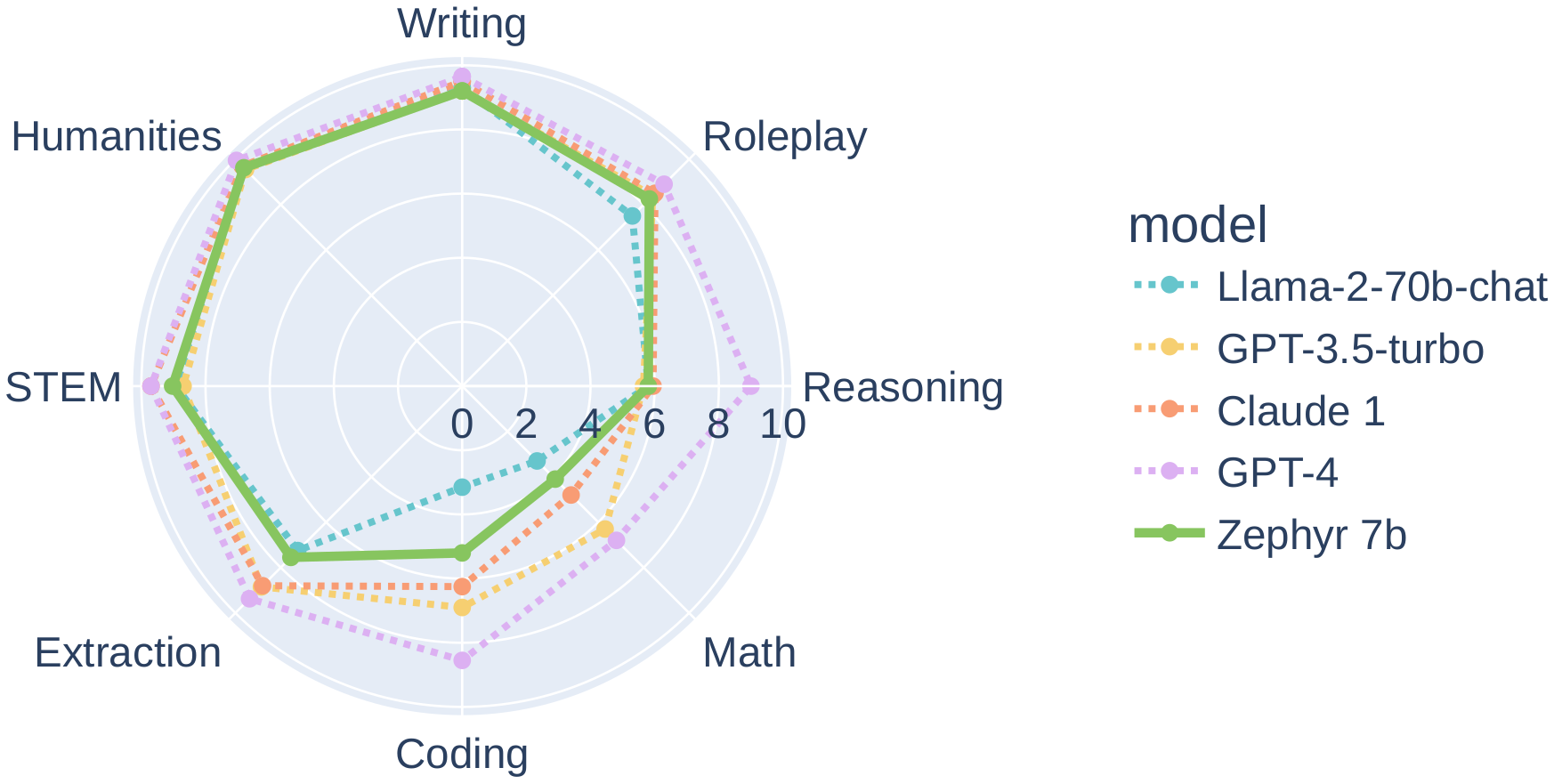license: apache-2.0
datasets:
- open-r1/reasoning-mix
language:
- en
base_model:
- open-r1/Qwen2.5-Math-7B-RoPE-300k
library_name: transformers

OpenR1-Distill-7B
OpenR1-Distill-7B is a post-trained version of Qwen/Qwen2.5-Math-7B on Mixture-of-Reasons; a curated dataset of 350k reasoning traces distilled from DeepSeek-R1 in the domains of mathematics, coding, and science. This model matches or exceeds the performance of DeepSeek's 7B distilled model
Model description
- Model type: A 7B parameter GPT-like model fine-tuned on a mix of publicly available, synthetic datasets.
- Language(s) (NLP): Primarily English
- License: Apache 2.0
- Finetuned from model: a variant of Qwen/Qwen2.5-Math-7B, whose RoPE base frequency was extended to 300k to enable training on a context of 32k tokens.
Model Sources
- Repository: https://github.com/huggingface/alignment-handbook
- Demo: https://huggingface.co/spaces/HuggingFaceH4/zephyr-chat
- Chatbot Arena: Evaluate Zephyr 7B against 10+ LLMs in the LMSYS arena: http://arena.lmsys.org
Performance
At the time of release, Zephyr-7B-β is the highest ranked 7B chat model on the MT-Bench and AlpacaEval benchmarks:
| Model | AIME 2024 | MATH-500 | GPQA-D | LiveCodeBench |
|---|---|---|---|---|
| OpenR1-Distill-7B | 52.66 | 89 | 52.78 | X |
| DeepSeek-R1-Distill-Qwen-7B | 51.25 | 93.45 | 52.4 | 37.41 |
In particular, on several categories of MT-Bench, Zephyr-7B-β has strong performance compared to larger open models like Llama2-Chat-70B:
However, on more complex tasks like coding and mathematics, Zephyr-7B-β lags behind proprietary models and more research is needed to close the gap.
Intended uses & limitations
The model was initially fine-tuned on a filtered and preprocessed of the UltraChat dataset, which contains a diverse range of synthetic dialogues generated by ChatGPT.
We then further aligned the model with 🤗 TRL's DPOTrainer on the openbmb/UltraFeedback dataset, which contains 64k prompts and model completions that are ranked by GPT-4. As a result, the model can be used for chat and you can check out our demo to test its capabilities.
You can find the datasets used for training Zephyr-7B-β here
Here's how you can run the model using the pipeline() function from 🤗 Transformers:
# Install transformers from source - only needed for versions <= v4.34
# pip install git+https://github.com/huggingface/transformers.git
# pip install accelerate
import torch
from transformers import pipeline
pipe = pipeline("text-generation", model="HuggingFaceH4/zephyr-7b-beta", torch_dtype=torch.bfloat16, device_map="auto")
# We use the tokenizer's chat template to format each message - see https://huggingface.co/docs/transformers/main/en/chat_templating
messages = [
{
"role": "system",
"content": "You are a friendly chatbot who always responds in the style of a pirate",
},
{"role": "user", "content": "How many helicopters can a human eat in one sitting?"},
]
prompt = pipe.tokenizer.apply_chat_template(messages, tokenize=False, add_generation_prompt=True)
outputs = pipe(prompt, max_new_tokens=256, do_sample=True, temperature=0.7, top_k=50, top_p=0.95)
print(outputs[0]["generated_text"])
# <|system|>
# You are a friendly chatbot who always responds in the style of a pirate.</s>
# <|user|>
# How many helicopters can a human eat in one sitting?</s>
# <|assistant|>
# Ah, me hearty matey! But yer question be a puzzler! A human cannot eat a helicopter in one sitting, as helicopters are not edible. They be made of metal, plastic, and other materials, not food!
Bias, Risks, and Limitations
Zephyr-7B-β has not been aligned to human preferences for safety within the RLHF phase or deployed with in-the-loop filtering of responses like ChatGPT, so the model can produce problematic outputs (especially when prompted to do so).
It is also unknown what the size and composition of the corpus was used to train the base model (mistralai/Mistral-7B-v0.1), however it is likely to have included a mix of Web data and technical sources like books and code. See the Falcon 180B model card for an example of this.
Training and evaluation data
Training hyperparameters
The following hyperparameters were used during training:
- learning_rate: 5e-07
- train_batch_size: 2
- eval_batch_size: 4
- seed: 42
- distributed_type: multi-GPU
- num_devices: 16
- total_train_batch_size: 32
- total_eval_batch_size: 64
- optimizer: Adam with betas=(0.9,0.999) and epsilon=1e-08
- lr_scheduler_type: linear
- lr_scheduler_warmup_ratio: 0.1
- num_epochs: 3.0
Training results
Framework versions
- Transformers 4.35.0.dev0
- Pytorch 2.0.1+cu118
- Datasets 2.12.0
- Tokenizers 0.14.0
